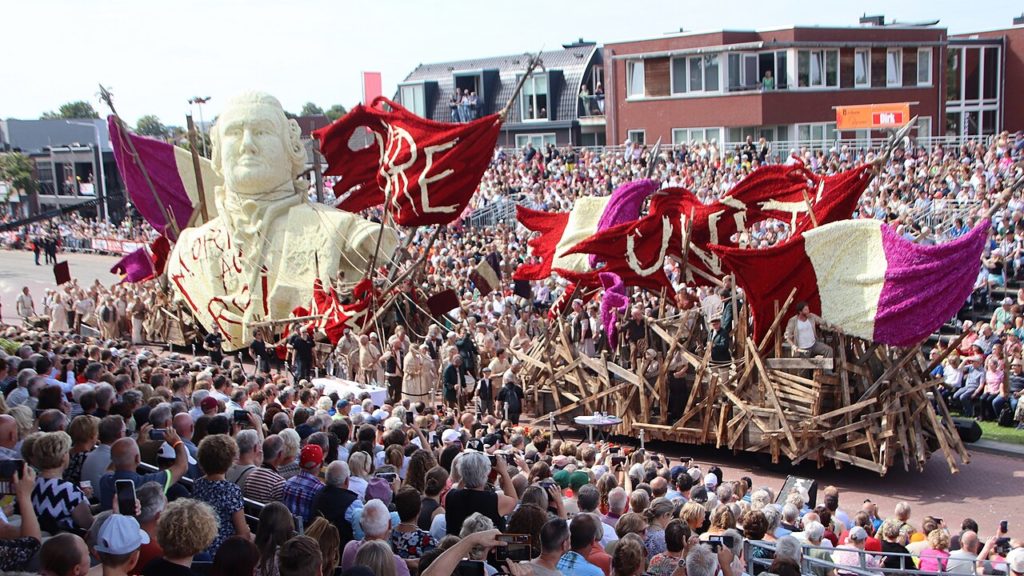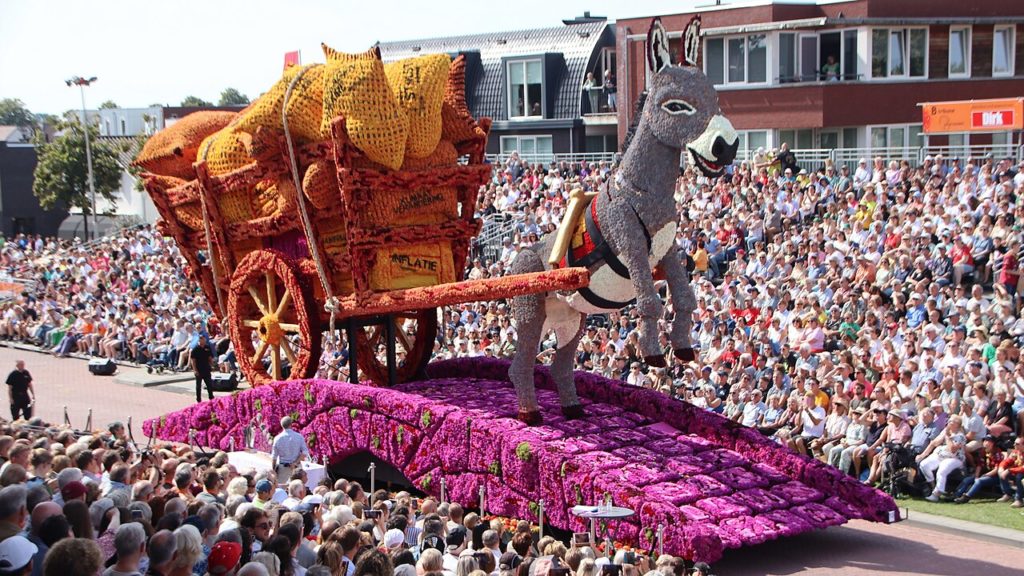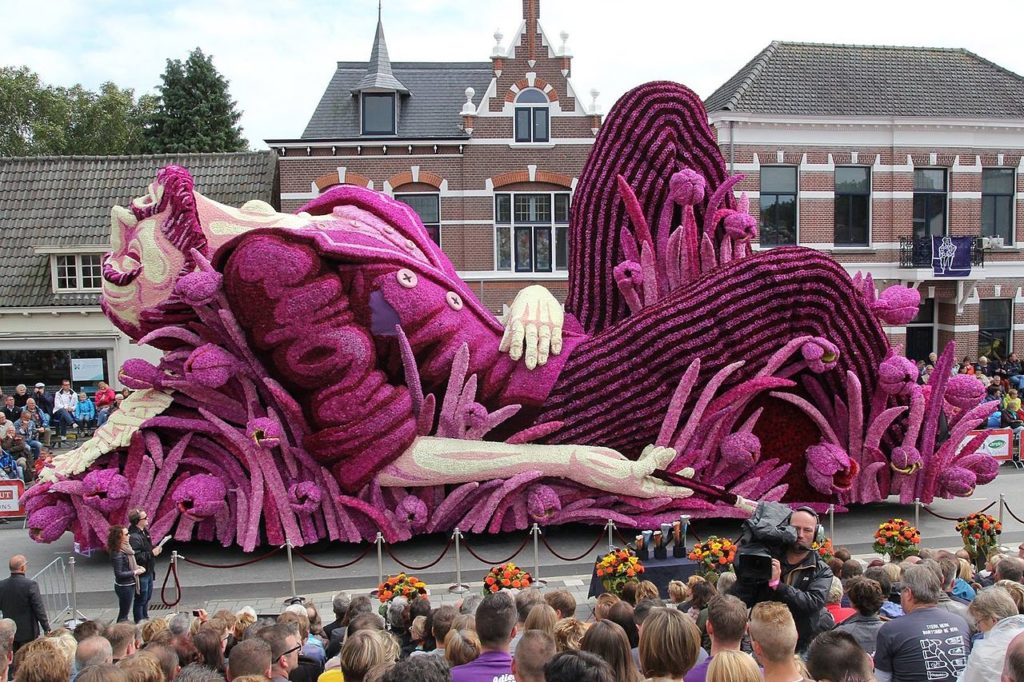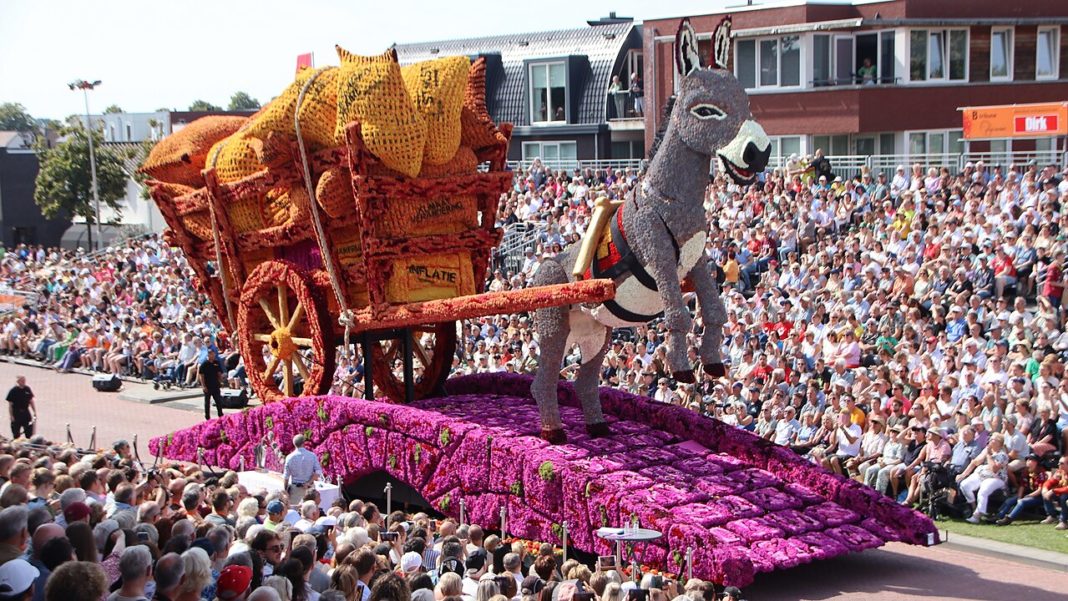The event is known for its impressive displays of giant floats entirely covered in dahlias, creating intricate and colorful designs. The floats are created by different neighborhoods (buurtschappen) in Zundert, and each neighborhood competes to create the most stunning and creative float.

The parade typically occurs on the first Sunday of September, attracting thousands of visitors from the Netherlands and around the world. The participating floats are judged based on various criteria, including design, craftsmanship, and the creative use of dahlias. The use of dahlias is a tradition that dates back to the early 20th century when the flower became popular in Zundert.

The floats are large artworks made of steel wire, cardboard, papier-mâché, and flowers. They are constructed entirely by volunteers. In the Bloemencorso Zundert, only dahlias are used to decorate the floats. Thousands often required to construct one and in total, around 8 million dahlias are needed for the Corso. Of these, around 6 million are cultivated in Zundert.

The floats are made by twenty different hamlets, each with hundreds of volunteer builders of all ages. Older members of the hamlet are usually responsible for planting and growing the dahlias, while younger ones build the floats in large temporary tents that are built exclusively for the event.
The bloemencorso is also a competition. A professional and independent jury decides which float is the most beautiful and which hamlet will be crowned the winner of that year.
In december 2021, the culture of flower and fruit parades in the Netherlands, of which the Zundert parade is an element, was inscribed with the International Representative List of Intangible Cultural Heritage of Humanity of Unesco.
According to the Internet














